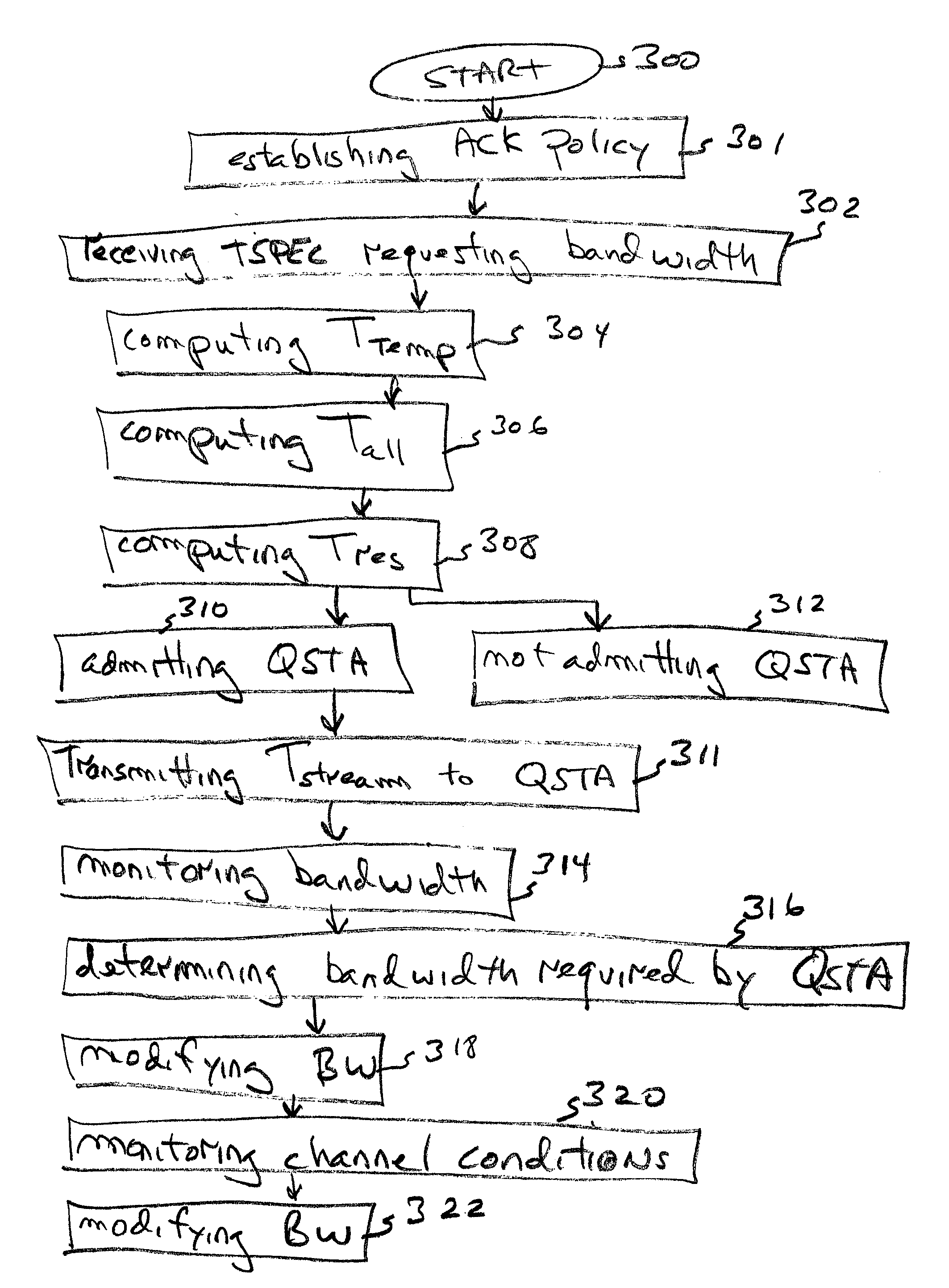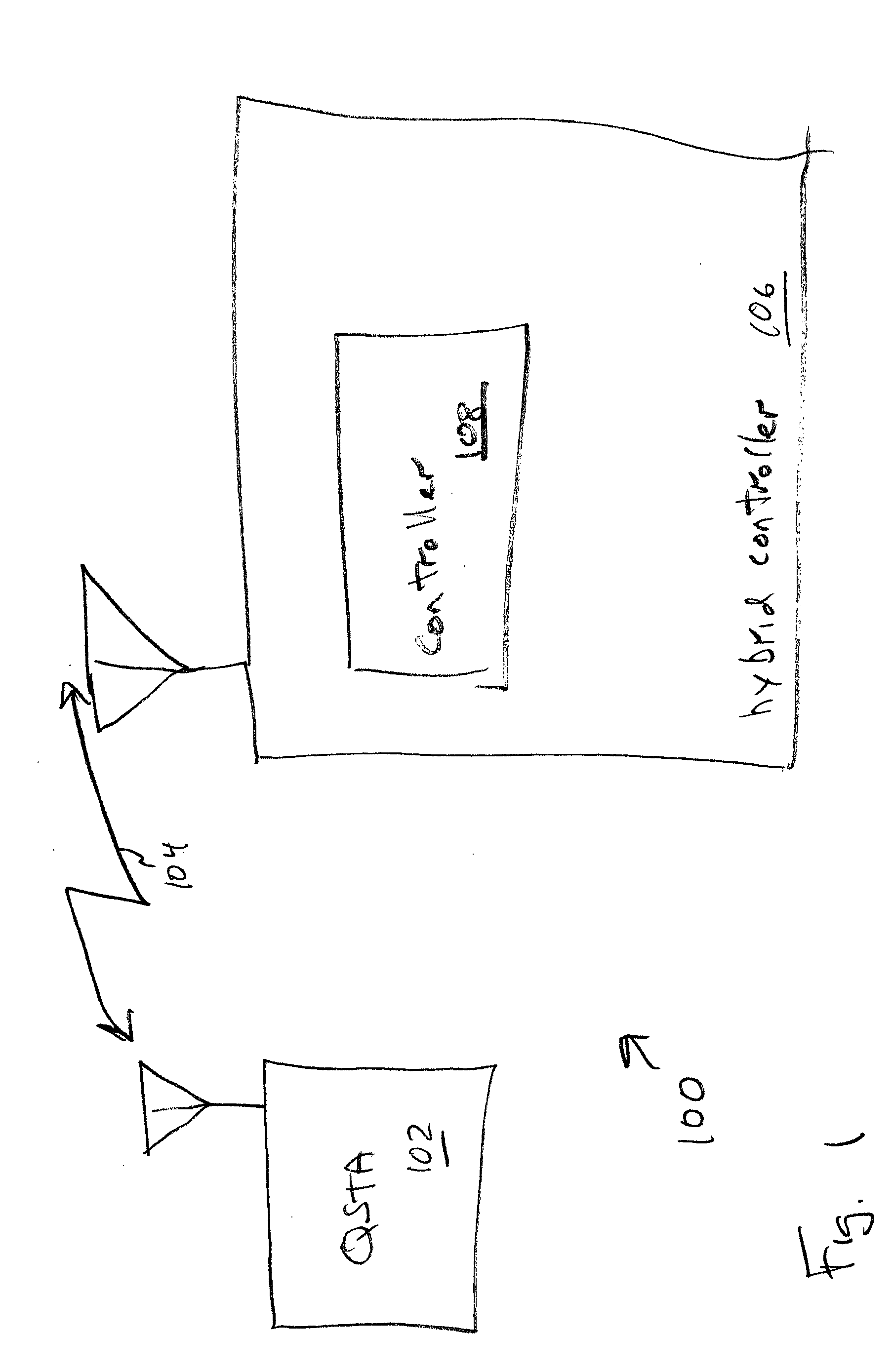System and method for IEEE 802.11 network admission control
a network admission control and network technology, applied in the field of wireless local area network (wlan) communications, can solve the problems of lack of proposals in one or more aspects, large error rate of packets in such systems, and no objective means provided
- Summary
- Abstract
- Description
- Claims
- Application Information
AI Technical Summary
Problems solved by technology
Method used
Image
Examples
case 1
ate ACK
[0083] The expected amount of resources within T that are needed to satisfy the TSPEC are then given by: TTXOP=Tpifs+Tpoll+Tsifs+q2TTX+p2(Tslot+TTXOP) orTTXOP=Tpifs+Tpoll+Tsifs+q2TTX+p2Tslotq2 and(1)Tstream,i=npollTTXOP(2)
[0084] Within this duration, the data is sent over npoll TXOPs of duration TTX. Equation 1 provides the expected value of the amount of time of the TXOPs taking into account the possibility of the poll frame being in error. In each TXOP, ndata frames should be sent reliably (on average). Assuming that the average amount of channel occupancy time that is used for transmitting one frame successfully (or one frame being dropped) is given by Tsucc. Then:
TTX=ndataTsucc (3)
[0085] Let Tsucc=Tsucc,O—the duration of the channel occupancy for a frame to be either transmitted successfully or be dropped from the Oth retry.
[0086] Then, the channel occupancy before Oth,ith, and nth retry is given by Tsucc,0=Tdata+Tsifs+q1(Tack+Tsifs)+q1p2(Tslot+Tsucc,1...
case 2
ACK
[0090] For this case, resources are allocated to two streams (assuming that there is only one receiver)—a data stream and an acknowledgement stream. Thus, the expected amount of resources that need to be allocated are given by:
Tstream,i=npoll(TTXOP,d+TTXOP,a) (6)
where TTXOP,d and TTXOP,a are the respective TXOPs assigned to the data and acknowledgement streams. As above, it can be shown that: TTXOP,d=Tpifs+Tpoll+Tsifs+q2TTX,d+p2Tslotq2 and(7)TTXOP,a=Tpifs+Thar+Tsifs+q2TTX,a+p2Tslotq2(8)
where TTX,d and TTX,a respectively denote the (expected) duration of the TXOP that have been assigned for data and acknowledgement streams during each poll. In the data TXOP, only data frames separated by Tsifs are sent by the sender, and any frame that is not received correctly is retransmitted up to n times. Thus: TTX,d=ndata∑i=0np1i(Tdata+Tsifs)=(1-p1n+11-p1)ndata(Tdata+Tsifs)≈(ndata(Tdata+Tsifs)q1)(9)
[0091] For the acknowledgement stream, it is the amount of time it takes ...
PUM
 Login to View More
Login to View More Abstract
Description
Claims
Application Information
 Login to View More
Login to View More - R&D
- Intellectual Property
- Life Sciences
- Materials
- Tech Scout
- Unparalleled Data Quality
- Higher Quality Content
- 60% Fewer Hallucinations
Browse by: Latest US Patents, China's latest patents, Technical Efficacy Thesaurus, Application Domain, Technology Topic, Popular Technical Reports.
© 2025 PatSnap. All rights reserved.Legal|Privacy policy|Modern Slavery Act Transparency Statement|Sitemap|About US| Contact US: help@patsnap.com



